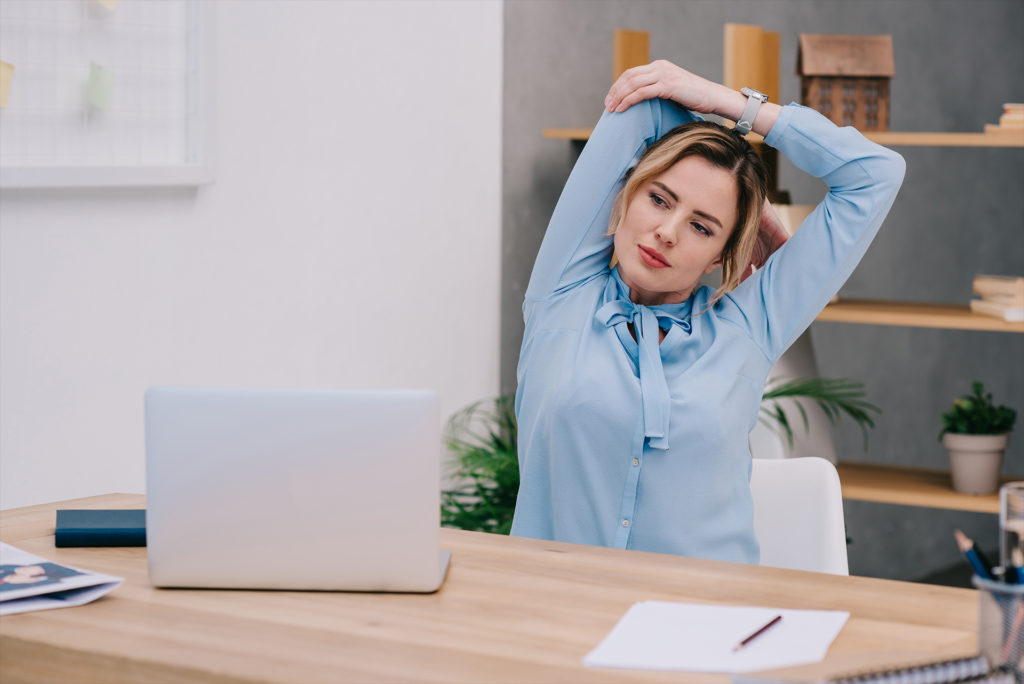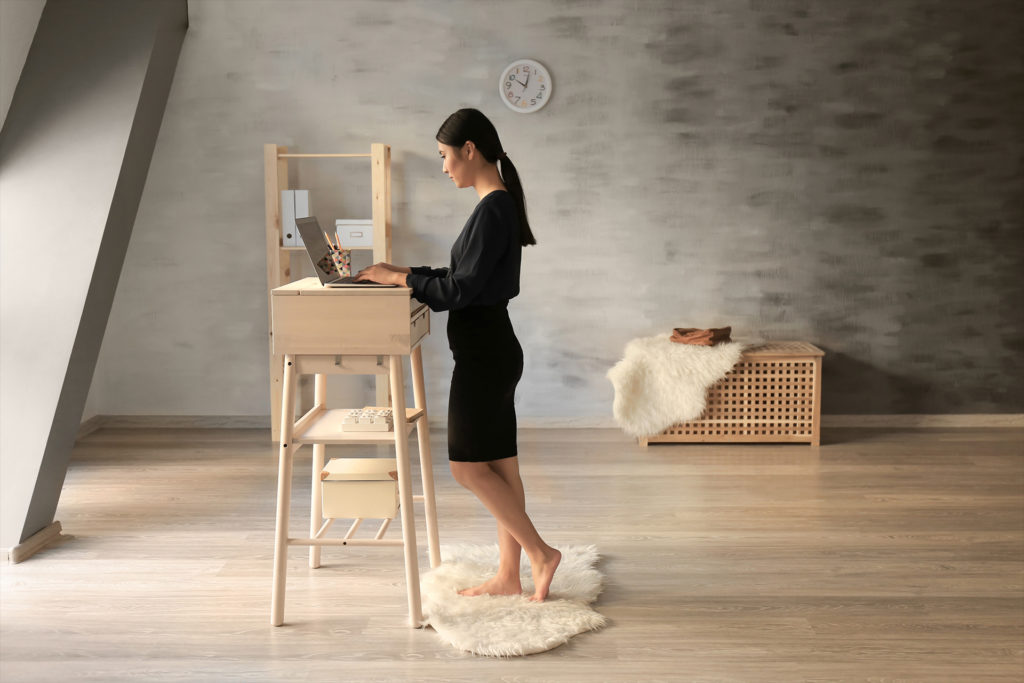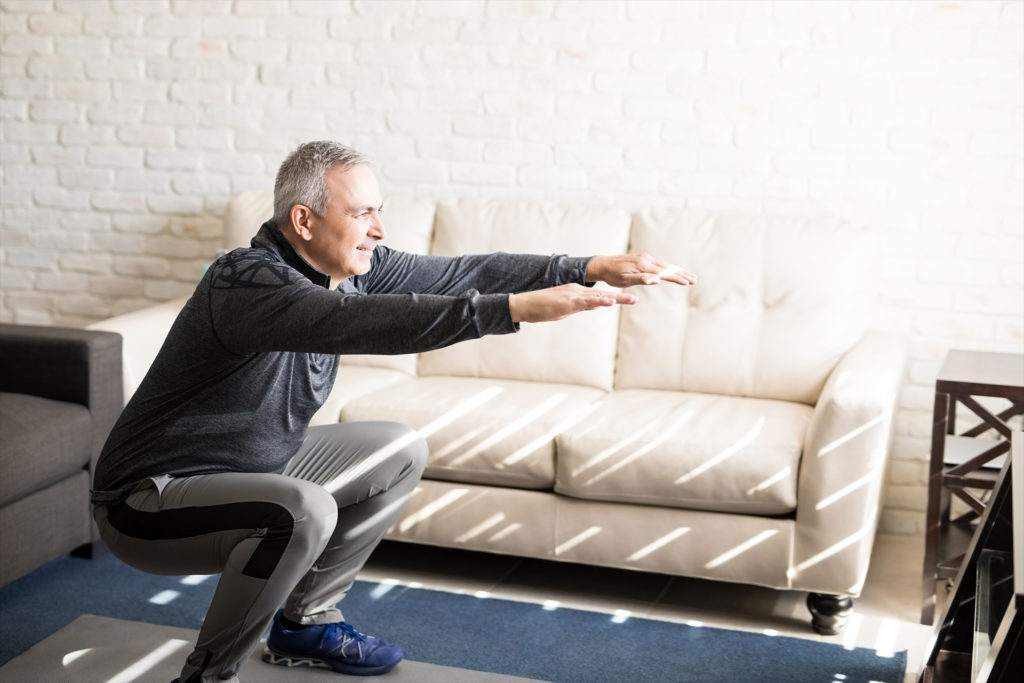Working From Home: How To Alleviate Neck, Back And Shoulder Pain

Feel Good Contacts has collaborated with Personal Trainer, Badrul Islam to offer advice on how to alleviate neck, shoulder and back pain when working from home during the lockdown.
Sitting at our desk, dining table, bed or sofa (if that’s where you’re working from) for eight hours a day is the most passive thing you can do and can lead to back pain – one of the most common complaints made by office workers. Besides this problem, research shows that long periods of sitting can have a detrimental impact on our health and wellbeing. However there are some exercises and other initiatives you can take to alleviate neck, shoulder and back pain when working from home during the lockdown:
Avoid working on the sofa
Experts will say that whatever you do, don’t work on your sofa, but not everyone has the luxury of having a home office with a desk and ergonomic chair. Although, it will seem like the most comfortable place to work, the sofa is actually the worst place to work as it encourages you to slump and puts a huge amount of strain on your shoulder and neck area which you inevitably crane.
Dynamic exercises
If you have to work on a sofa then remember to get up and walk around your home. Whilst walking, you could try some dynamic shoulder stretches. Firstly, lift your shoulder and roll it back and squeeze the shoulder blades together and then allow the shoulders to depress, roll forward and then repeat this exercise. You should also do this movement in reverse. Next, take a seat and try some dynamic neck exercises to mobilise the area. You’ll need to move your head up and down, look to the left and right and also tilt to the left and right. Do not hold the positions for any length of time because the neck is a particularly sensitive area.
Stand up
During the day, if it’s possible, stand up and do your work. Standing uses more muscles and burns more calories than sitting and it’s good for your back and posture. If you can’t stand and work, then stand up every 30 minutes to stretch your chest and extend your spine to reverse the hunched position of sitting.
Use a towel or broomstick to use for stretching. Holding the towel or broomstick with straight arms at either end, rotate back and forth over your head slowly. Doing this can help to open up your chest muscles and mobilise your back muscles. Stretching is vital for maintaining good posture, especially when working at a desk, table, sofa, bed for several hours a day. It will also help to reduce back and neck pain significantly.
Make your own standing desk
We know that standing desks can decrease chronic back pain caused by prolonged sitting so why not create your own one at home. Try standing up and working at the kitchen counter or position an ironing board at standing level. Position it next to a wall to create stability.
Dead time
When you’re stuck with some dead time, for example, whilst waiting for the kettle to boil don’t be embarrassed to do some light exercises like calf raises, squats or lunges.
Drink water
Try and break up multiple chunks of sitting time (set an alarm if you feel you need it) with some movement by taking trips to the kitchen. The general rule is to take a walk at least every half an hour to get a glass of water. People get dehydrated when they sit, plus as the months get warmer you’ll need the extra H2O.
Take time to relax
We are well aware of how bad screen time can be for your health. So unless you have a particular deadline that you need to hit, you should stick to your structured work hours as much as possible. It’s important to be able to relax after your workday and not keep thinking about work. This is easier to do if you shut the laptop and ignore your emails from the moment your workday ends. Try to organise fun and relaxing things for yourself to do after work, like dancing, having a long bath or reading a book to help you slip more easily into ‘relax mode’.












